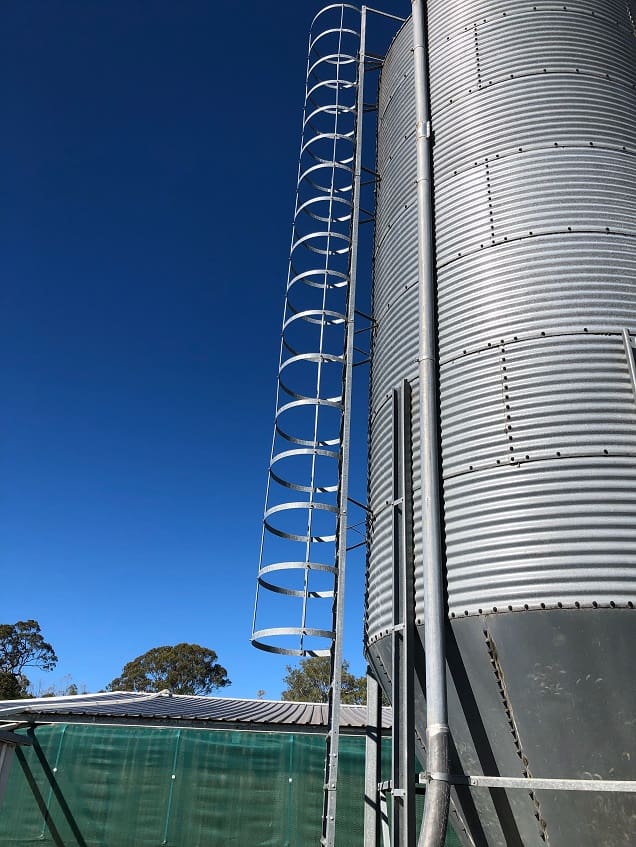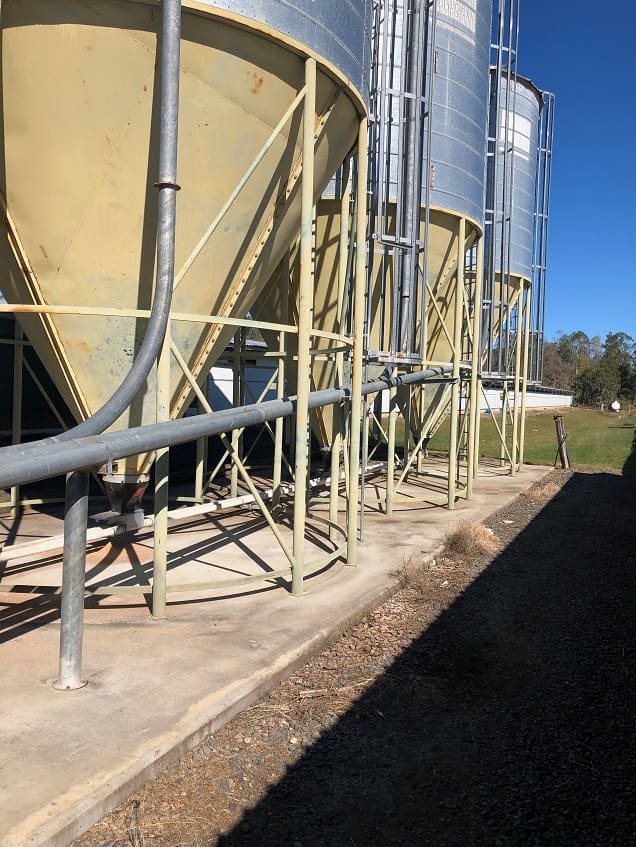GRAIN growers accessing seed from on-farm silos to sow this year’s winter crops, or giving their silos a clean out ahead of the next harvest, need to be aware of the hazards that lie in wait.
FarmSafe Queensland executive director, Jamie Cupples, said silos were essentially a ‘confined space’ and also had ‘working from heights’ issues that posed substantial risks for farmers and their employees.
 “So, the modern silo needs to have fall restraint systems and ladders with a cage around them. If they haven’t got that then there has to be some form of harness on the operator getting from the ground to the top,” he said.
“So, the modern silo needs to have fall restraint systems and ladders with a cage around them. If they haven’t got that then there has to be some form of harness on the operator getting from the ground to the top,” he said.
“The other issue is getting the grain auger positioned over the top of them. That can be achieved from the ground by using a lid opening device – a control on a cable or something similar that lifts the lid up so no-one has to climb up a ladder to position it.
Mr Cupples said there were also safety issues around opening silos and accessing them out without creating a hazard.
“If you look at the confined space issue, it depends what has been in them. If it has had grain in it that might have had, say, phostoxin in it where it has created a gas, there is potentially a toxic atmosphere,” he said.
“Similarly, there could be grain that has been put in there that has fermented or gone off. In that circumstance that product can create another toxic atmosphere.”
Mr Cupples said being able to access silos safely to clean them out depended on what type of silo they were.
“With a flat-based silo that sits on a pad on the ground, normally they will have an access door at ground level so someone can access them to clean them out. Some will have sweep walkers inside them which are rotating augers that clean the floor. If they are fitted, it is important to make sure they are de-energised and not running before people get in the silo,” he said.
“Anytime anyone enters a silo they should have a buddy system in place – in other words someone outside to oversee them being in there.
“The other type of silo is a conical base which have a cone-shaped base. Most of the modern ones will have inspection hatches built into the cone. When the silo is empty or close to being empty, an operator can put their upper body through the hatches to access the bottom of the silo and use a hose to clean the silo out.
“What we are trying to achieve is to eliminate the need for anyone to enter the silo to clean it out. If someone does have to enter it it needs to be assessed as confined space and apply procedures to manage the risk.”
Mr Cupples said the other critical thing to remember was that, once the work was done, silos should be sealed off and ladders locked off so children could not access them.
Insect infestation
Meanwhile, growers opening silos with stored grain that has not been monitored since harvest could be in for a nasty surprise, especially if the grain has been infested with insects, necessitating treatment.
 Grains Research and Development Corporation (GRDC) grain storage extension project manager, Chris Warrick, said his team often received calls from growers in autumn after they have discovered insects while cleaning seed or at sowing.
Grains Research and Development Corporation (GRDC) grain storage extension project manager, Chris Warrick, said his team often received calls from growers in autumn after they have discovered insects while cleaning seed or at sowing.
“Sometimes this can be due to the fact that their silos don’t have ladders, so they have been unable to monitor grain at the top of the silo where insects often begin multiplying,” Mr Warrick said.
“The warmer and sometimes more humid air in the headspace of a silo is more conducive to insects reproducing so they are often found there first.”
Mr Warrick said spray-on protectants applied at harvest time to grain set aside for planting seed is designed to prevent insects for six to nine months.
“Protectants are not registered for use on grain that is already infested with insects because they are designed to deter insects – not kill them. Each protectant chemistry can also only be applied to a parcel of grain once,” he said.
When stored grain insects are detected, fumigation of silos is the only control option.
“The only on-farm control options we have to kill insects are phosphine, which can be applied by growers, ProFume®, which can only be applied by a commercial fumigator, or establishing a controlled atmosphere with nitrogen or carbon dioxide,” Mr Warrick said.
“All of these measures require gas-tight storage (AS2628) for reliable control results that avoid the development of resistance in insects.”
The top five practices for successful grain storage:
- Aeration cooling: Correctly designed and managed, it provides cool grain temperatures and uniform grain moisture conditions. Aeration reduces storage problems with moulds and insect pests, plus maintains a range of grain quality attributes relating to germination, pulse seed colour, oil quality and flour quality.
- Hygiene: A high standard of storage facility hygiene is crucial in keeping background pest numbers to a minimum and reducing the risk of grain infestation.
- Monitoring: To prevent nasty surprises, undertake monthly checking of grain in storage for insect pests (sieving/trapping) as well as checking grain quality and temperature. Keep monthly storage records, including any grain treatments applied.
- Fumigation: In Australia, only fumigant gases (e.g. phosphine) are registered to deal with insect pest infestations in stored grain. To achieve effective fumigations, the storage/silo must be sealable – gas-tight (AS2628) to hold the gas concentration for the required time.
- Grain protectants: Used on specific parcels of grain like planting seed held on farm, or bulk grain where potential grain buyers have agreed to its use, grain protectant sprays provide another line of defence against storage pests. They are designed to deter insects, not kill them.
Source: GRDC

HAVE YOUR SAY